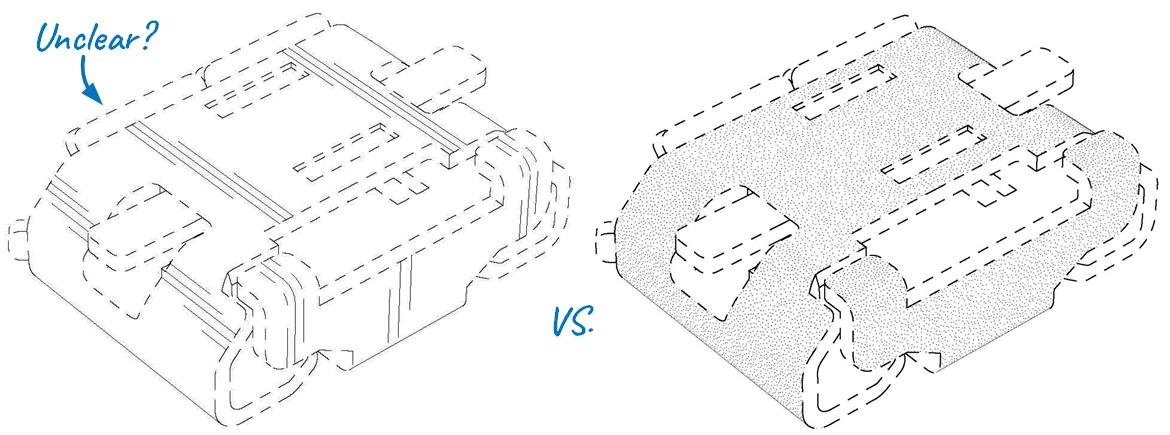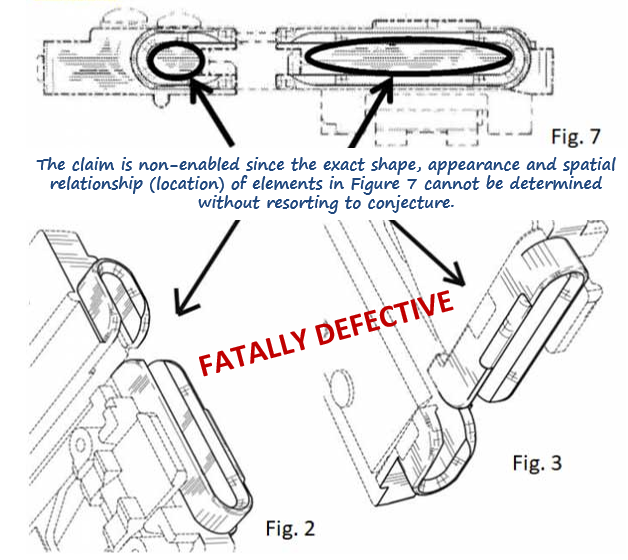Crystal Clear Claim Scope: Why Precision in Design Patent Drawings Matters
- IP DaVinci
- Article
- June 6, 2025
Table of Contents
⚖️ Want Design Claims That Actually Hold Up?
STIPPLES by IP DaVinci delivers litigation-ready drawings that leave no room for ambiguity:
- 🔍 Claimed vs. disclaimed areas are crystal clear
- 🎯 Boundaries precisely defined with stipple and edge shading
- 🚫 Avoid examiner objections for unclear claim scope
- 🛡️ Support for litigation, licensing, and early-stage clearance
💡 Turn Ambiguous Sketches into Unmistakable Patent Claims
Attorneys use STIPPLES to reduce risk and raise drawing quality from day one.
Crystal Clear Claim Scope: Why Precision in Design Patent Drawings Matters
In design patent law, the drawing is the claim. Every dotted line, shading style, and visual boundary influences what’s protected—and what’s not. A vague drawing opens the door to office actions, competitor design-arounds, and courtroom disputes.
🎯 The Problem: Traditional Drawings Blur the Boundaries
Line-only drawings with dashed lines and minimal shading often fail to make the claim scope clear:
- Are those edges claimed or disclaimed?
- Is that shading functional or ornamental?
- Is the shape’s depth even part of the claim?
In litigation, unclear drawings can invite unnecessary risk. In prosecution, they can lead to §112 objections or §171 indefiniteness concerns.
✅ The Solution: Use STIPPLES to Define Scope with Certainty
STIPPLES draw the line—literally—between claimed and unclaimed content. Unlike traditional methods that rely on guesswork or boilerplate disclaimers, stippled drawings show examiners and judges exactly what matters.
How STIPPLES Boost Patent Quality
- 🔲 Claim Area Highlighted: The stippled portion clearly indicates what’s being claimed. No ambiguity.
- 💨 Unclaimed Area Softened: Dashed lines and edge gradients reduce visual emphasis, indicating disclaiming intent.
- 📐 Contours, Boundaries, and Depth Rendered: Especially helpful for designs involving curvature or complex geometry.

👨⚖️ For Attorneys, the Benefits Are Legal and Strategic
- Reduce Office Actions: Clear visuals = fewer objections during examination.
- Strengthen Enforceability: Claim scope isn’t just argued—it’s shown.
- Support Litigation and Licensing: Clear scope helps define infringement and increases leverage in negotiations.
Whether you’re prepping for USPTO filing, planning for international filings, or protecting a client’s flagship product, visual clarity in the drawing is what makes the design patent stand up.
📌 Summary: Don’t Let Poor Drawings Weaken a Strong Design
Too often, design patents fail not because the design is weak—but because the drawings are.
STIPPLES from IP DaVinci ensures:
- You claim exactly what matters
- You disclaim what doesn’t
- You don’t leave interpretation to examiners or competitors
Let your next design filing be indisputable from day one.
🎯 Want Enforceable Design Claims? Start with Better Drawings
Upload your 3D model or photos and we’ll show you the STIPPLES difference.

